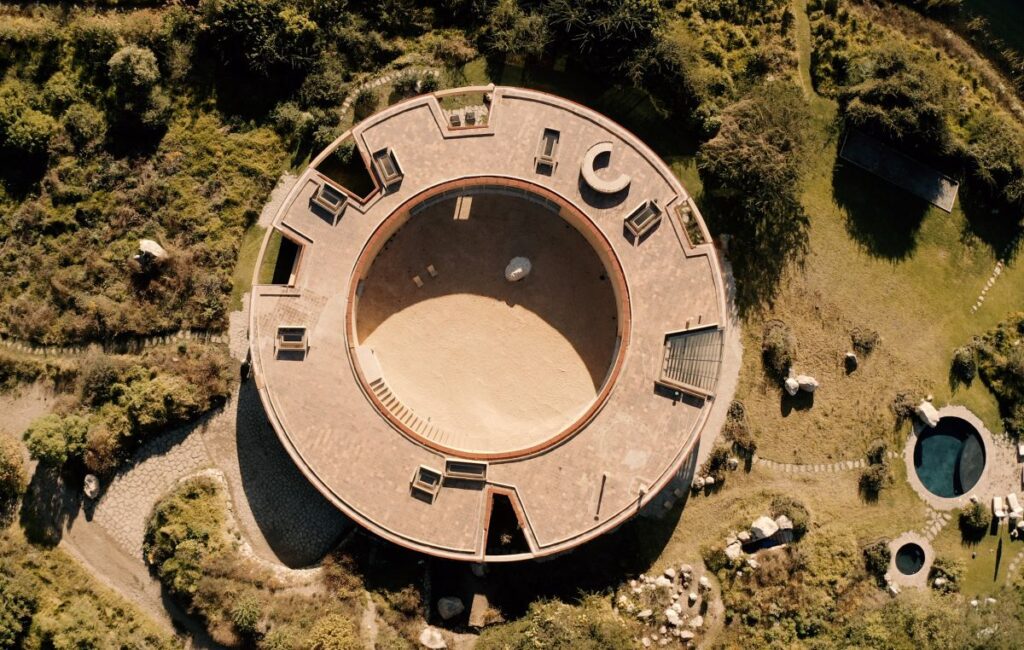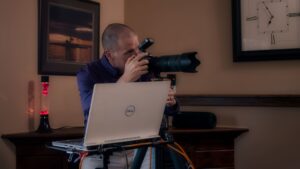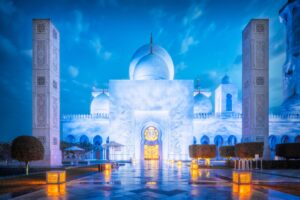
What was an interest became a hobby, a passion, an obsession, then a career.
Edmund Sumner
You can also listen to this episode with Edmund on iTunes, Pocket Casts, Spotify, Castbox, and Google Podcast
Join our photo community and interact with the host, Perrin, gain access to monthly photo contests, discover daily inspiration, and much more!
Interested in contributing? Visit our Supporter page to find out more.

It all started with a few faxes. Before blogs and digital portfolios, Edmund Sumner was sending photocopied Polaroids to international magazines from a tiny flat. One by one, editors took notice. A commission here, an introduction there-and soon, Edmund was photographing rising architects in Japan, faxing images across time zones, and carving out a space in a niche few dared to touch: architectural photography with soul.
Edmund doesn’t just document buildings. He interprets them. Whether he’s working in India, Japan, or his beloved Mexico-where his newest book Casa Mexicana is set-he’s drawn to the quiet presence of spaces, the interplay of light, the lived-in texture of place. His philosophy? A good architectural photo isn’t just a record; it’s a conversation.
In this episode, Edmund shares how growing up in a family of designers shaped his visual instincts, why architecture feels like a kind of energy to him, and how being a little “visually nosy” can take you further than any degree. We also explore what happens when you follow the work you love, not just the paycheck-and why photographing a bad building might actually be the easiest gig of all.
Here’s some of what we talked about:
- The long road (and three rejections) behind his new book, Casa Mexicana
- Why “some photographers record, others interpret” is his guiding mantra
- What architectural photography taught him about patience, place, and people
- The challenges of working internationally-and why language barriers can be a gift
- How social media both saved him during the pandemic and pushed him to reinvent
- Why editing photos is hard-but choosing which not to show might be harder
Whether you’re an architecture nerd, a photographer, or just someone who sees poetry in walls and windows, Edmund brings a candid, grounded voice to the conversation. Hope you enjoy this one.

Q: How do you align your creative mojo with a client’s commercial goals?
Edmund: That’s a very good question and something I used to worry about. Now, I don’t think about it too much. I often win commercial work through my personal work, and most clients in architecture hire me to do my thing. They’re not professional media buyers, so briefs are usually minimal-just a bit about the project-and I’m trusted to bring my perspective. I’ve found that my personal work actually makes me a better commercial photographer, not worse.

Q: Does traveling widely influence how you see and capture architectural photography?
Edmund: I think it does affect me more than I realize. I’ve always had a romantic vision of the traveling photographer-the wind in your hair, that sort of thing. Each country has a different visual genre and look. Working abroad, especially in places where I don’t speak the language, actually helps me zone out and see things differently. Japan, in particular, taught me a lot about both photography and architecture. Sometimes being an outsider helps you notice things locals might overlook.

Q: How do you adapt your photography to reflect the cultural context of places like India, Japan, or Mexico?
Edmund: I think working in a different culture can be creatively liberating. You come in with fresh eyes and see things others might miss. In Japan, for example, they remove all furniture for shoots-very minimal. I prefer to include lived-in elements, even chaos like electric cables. In Mexico, the aesthetic is cool and flat-they even frown on dusk shots. You have to respect and adapt to each place’s visual language. I’ve learned that the cultural landscape shapes how I shoot and interpret architecture.

🔗 Connect with Edmund Sumner
🧭 What We Talked About
🎼 Early Journey / Origins
- Grew up in a design-rich environment with a father who studied architecture at the Bartlett and worked in interior design.
- Childhood immersed in visual culture, surrounded by works from artist Maud Sumner and design-focused family travels.
- Interest in photography evolved from hobby to obsession, leading to a self-taught career after an unsatisfying stint in advertising.
- First big break came via a fashion brand connection; his shoot got picked up by magazines, launching his freelance career.
📖 Philosophy / Vision / Storytelling
- Believes architectural photography is about interpreting, not just recording.
- Emphasizes the “essence” of a building and its energy, often shaped by subconscious perception.
- Passionate about working with architecture that has conceptual and visual depth.
- Sees photography as a form of visual advocacy, especially in promoting emerging architectural scenes.
- Describes architectural photographers as either recorders or interpreters: he leans strongly toward the latter.
📷 Tools, Gear, and Behind the Scenes
- Started with large-format 5×4 cameras; now uses a Sony setup with perspective control lenses.
- Prefers using longer lenses and stitching for compression and subtlety.
- Carries the Sony RX100 for casual use; values portability and quality.
- Post-processing is meticulous but aims for subtlety; most images are composites.
🔁 Practice, Teaching, Platforms
- Personal work deeply informs his commercial photography.
- Travels extensively-notably to Japan, India, Mexico-to build long-term visual narratives.
- Uses social media (especially Instagram) for connection and visibility, though he’s critical of algorithm changes.
- Advocates for platforms like Vero as non-algorithmic alternatives.
- Leads workshops and continually evolves his practice through international exposure.
💬 Advice, Creative Strategy, or Challenges
- Urges aspiring architectural photographers to study architecture deeply.
- Sees editing (photo selection) as a personal challenge, mitigated by delivering focused selections.
- Encourages early-career photographers to build experience through strategic unpaid opportunities.
- Balances creative satisfaction with commercial viability by aligning personal and client visions.
🌍 Influences, People, Brands, or Places
- Inspired by working in Japan, where he collaborated with Kengo Kuma.
- Discovered the vibrant architecture scene in Mexico through a commission from Tadao Ando.
- Book layout collaboration with Tim George (designer) and Jonathan Bell (writer).
- Tools: Laowa 20mm f/4 Zero-D Shift, tilt-shift lenses, Adobe Photoshop, Sony cameras.
- Influenced by photographers like Ezra Stoller and the visual style of Wallpaper* Magazine.
🔮 What’s Next for Edmund
- Release of his new book Casa Mexicana, a 13-year documentation of Mexican architecture.
- Continues promoting emerging architecture through photo books and editorial work.
- Upcoming workshop in November 2025.
- Exploring video as a collaborative medium, with less personal attachment but strong execution.
- Hopes to expand his geographic reach further, possibly including projects in Canada or the U.S.









